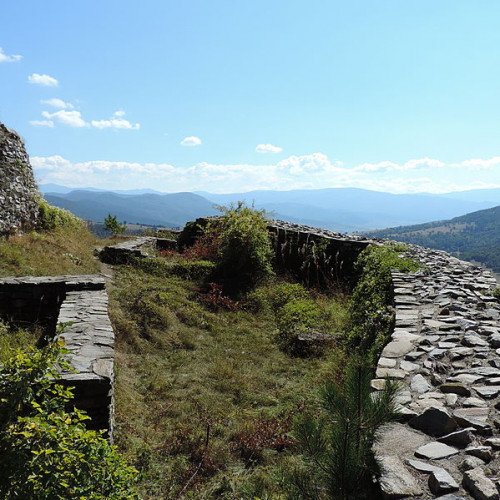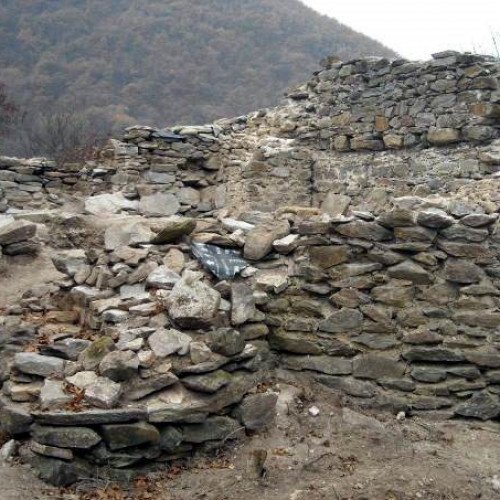Castles of "Bulgaria" TSEPINA vs URVICH

TSEPINA
Tsepina (Bulgarian: Цепина) or Tzepaina (Greek: Τζέπαινα) was a castle and town in the western Rhodope mountains, southern Bulgaria, now in ruins. It is 6 kilometres (4 mi) from the Dorkovo village in the north-eastern part of the Chepinska valley. Tsepina is 317 metres (1,040 ft) above sea level. The town was built on a steep height at 1,136 metres (3,727 ft) above sea level. Its outer walls closed an area of 25 decares and was dominated by a citadel at the top of the cliff. The foundations of three churches have been excavated as well as four large water storage tanks up to 10 metres (33 ft) deep. The site was settled already during prehistorical times. Remnants of pottery from the 4th–6th century and houses and a large three-aisled church in the area of the citadel point to a settlement during early Byzantine times. The Bulgarians took the castle in the 9th century but with the end of the First Bulgarian Empire in the beginning of the 11th century the Byzantines conquered it. The other buildings and pottery found on the site date to the 12th–14th centuries, when the fortress was repeatedly fought over between the Byzantines and Bulgarians due to its strategic location. During the reign of the Bulgarian emperor Kaloyan (1197–1207), the fortress was the residence of his nephew, the despot Alexius Slav. In 1246 it fell, along with the other fortresses in the region, to the Empire of Nicaea, but Bulgarian emperor Michael II Asen (1246–1256) recovered it soon after the death of the Nicaean emperor John III Vatatzes in 1254. The Nicaeans launched several unsuccessful attempts to recapture the fortress, but in 1256 Michael II Asen cedded it by treaty to Vatatzes' son and successor, Theodore II Laskaris.
Statistics for this Xoptio

URVICH
Urvich (also known as Kokalyane Urvich because nearest village - Kokalyane) is a medieval fortress in the territory of today's quarter Pancharevo, heir to the village of Glavishevo. It is located on the right riverside of Iskar River, in the hill of "Sredobardie", in the Lozen mountain, about 20 kilometres (12 mi) from Sofia downtown on the road to Samokov. In this region there is a river meander, which has been declared a natural landmark. The fortress was probably built in the 13th century during the Second Bulgarian Empire and its Emperor Ivan Shishman, called by the local population "Jasen" recent battles against the Ottomans. He has led and it is named and scenic road in the foothills of Vitosha mountain - from Boyana, through Bistrica, Pancharevo and Kokalyane, locality of Prosechenik, to the mouth of the estuary river Vedena in Iskar - Yassenov King Road whereby "Urvich" establishes a permanent connection with Vitosha fortresses" of Bistrica and Battil - Boyana. This region is the intersection of Vitosha, Plana and Lozen Mountains, where, at the Devil's Bridge, in the opposite site of Urvich had guard towers and mobile access bridge to the fortress. Urvich Wall on Livingston Island in the South Shetland Islands, Antarctica is named after the fortress of Urvich.